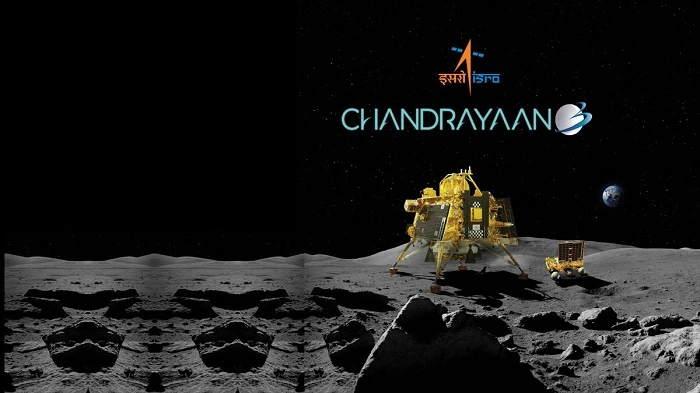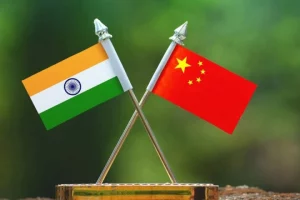India on Wednesday celebrated Chandrayaan-3’s massive success as it became the fourth country in the world to successfully soft-land a spacecraft on the Moon and the only nation to land on the lunar South Pole.
Marking India’s rising technological capability, Chandrayaan-3 landed on the moon around 18:04 hours IST as a nation of a billion-plus waited with bated breath, including Prime Minister Narendra Modi who was watching the proceedings live from Johannesburg in South Africa.
Till now, only three countries – the United States, Russia and China – had landed on different parts of the Moon, but not on its South pole.
After the successful landing of #Chandrayaan3, Prime Minister @narendramodi congratulated @isro chief S Somanath over a phone call from Johannesburg, South Africa.#Chandrayaan3Landing@PMOIndia @DrJitendraSingh @IndiaDST @ianuragthakur @Murugan_MoS @PIB_India @airnewsalerts… pic.twitter.com/F14kjppRyd
— Ministry of Information and Broadcasting (@MIB_India) August 23, 2023
“India is now on the moon. The entire India is celebrating this historic achievement. This is a moment to cherish forever,” said PM Modi on Chandrayaan-3 landing.
Historic day for India’s space sector. Congratulations to @isro for the remarkable success of Chandrayaan-3 lunar mission. https://t.co/F1UrgJklfp
— Narendra Modi (@narendramodi) August 23, 2023
Chandrayaan-3 mission was launched on July 14 via the GSLV Mark 3 (LVM 3) heavy-lift launch vehicle from the Satish Dhawan Space Centre in Andhra Pradesh’s Sriharikota.
The primary objectives of Chandrayaan-3 mission are threefold – to demonstrate safe and soft landing on Lunar surface; to demonstrate rover roving on the moon, and to conduct in-situ scientific experiments.
The successful soft landing is envisaged to serve as fore-runners for future landing missions and other technological progress in planetary exploration.
Chandrayaan-3 Mission:
‘India ,
I reached my destination
and you too!’
: Chandrayaan-3Chandrayaan-3 has successfully
soft-landed on the moon !.Congratulations, India !#Chandrayaan_3#Ch3
— ISRO (@isro) August 23, 2023
While the Chandrayaan-2 mission was only partially successful since the lander lost contact after a hard landing, Chandrayaan-1 is credited for having discovered the presence of water on the surface of the Moon, which was a new revelation for the world.
According to the Department of Space, Chandrayaan-3 in comparison to Chandrayaan-2 has been designed with the capabilities to autonomously handle a wide range of dispersion in order to achieve soft and safe landing.
#Watch: India scripts history as it becomes the first country in the world to reach the south pole of the Moon#Chandrayaan3 #Chandrayaan3Landing pic.twitter.com/VcUw9HGaOt
— INDIA NARRATIVE (@india_narrative) August 23, 2023
Chandrayaan-3 – built with a cost of Rs 250 crore excluding launch vehicle – was made more robust by improvements in Lander to handle more dispersion, improvements in sensors, software and propulsion systems, full level redundancies in addition to exhaustive simulations and additional tests being conducted towards ensuring a higher degree of ruggedness in the lander.
LVM3 M4/Chandrayaan-3:
Lift-off, tracking and onboard views pic.twitter.com/eUAFShS1jA— ISRO (@isro) July 14, 2023
Its components include various electronic and mechanical subsystems intended to ensure safe and soft landing such as navigation sensors, propulsion systems, guidance and control among others. Additionally, there are mechanisms for release of Rover, two-way communication related antennas and other onboard electronics.
Chandrayaan-3 lift off mass was nearly 3896 kg and the mission life of the lander and rover is approximately one Lunar Day which is equivalent to 14 Earth days.
Congratulations @isro on your successful Chandrayaan-3 lunar South Pole landing! And congratulations to #India on being the 4th country to successfully soft-land a spacecraft on the Moon. We’re glad to be your partner on this mission! https://t.co/UJArS7gsTv
— Bill Nelson (@SenBillNelson) August 23, 2023
Living upto the theme of ‘Science of the Moon’, the scientific instruments on the lander and the rover in Chandrayaan would be capable of studying the various aspects of Moon including the Lunar environment and thermo-physio properties.
At the same time, another experimental instrument incorporated in the Chandrayaan-3 mission could be capable of studying different aspects of the Earth as well.
Also Read: Chandrayaan-3’s lander Vikram makes communication link with Chandrayaan-2 in Moon orbit




















